With patience and skillful, meticulous hands, Phan Quan Dung has created countless vivid, beautiful artistic works from soulless grains of sand over the past 14 years.
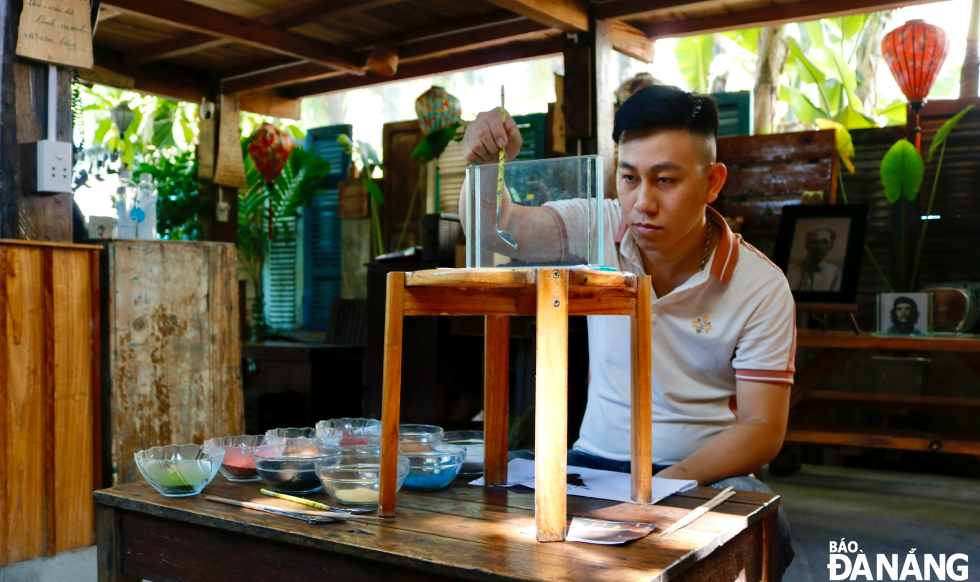 |
| Phan Quang Dung, 36, residing in Tho Quang Ward, Son Tra District, has been making sand paintings since 2010. |
Dung, who is residing in Tho Quang Ward, Son Tra District, Da Nang, felt in love with this art form whilst watching a sand art performance on TV.
Not long after that, he put aside his job as a chef at a local resort and moved to Ho Chi Minh City to learn sand art from artist Tran Thi Hoang Lan, commonly known as Y Lan, - a pioneer in the art of sand painting in Viet Nam.
During the process of studying this art form, Dung wanted to give up many times. However, with his great passion and efforts, and diligent practice, Dung was able to master the skills and began to create his own artworks after two years.
Currently, the 36-year-old man can create unique and distinct sand paintings with diverse topics such as landscapes, portraits, art, calligraphy, special architectures, flowers, and animals. Of which, portrait sand art works are the most difficult to do because they are required to be realistic and vivid.
According to Dung, for the sand painting profession, the most important things are patience, meticulousness, good health (no shaking hands, clear eyes) because the time to complete a work can be up to hours. Depending on the complexity and size, some sand paintings can be completed within a month.
He said that he wants to train human resources to continue to maintain, inherit and promote this form of arts, and at the same time, develop sand paintings into one of the city’s typical souvenir products. However, over the past time, he has not found anyone who is perseverant enough to pursue this art form.
Currently, Dung accepts orders for sand artworks according to the customer's request or his own creation.
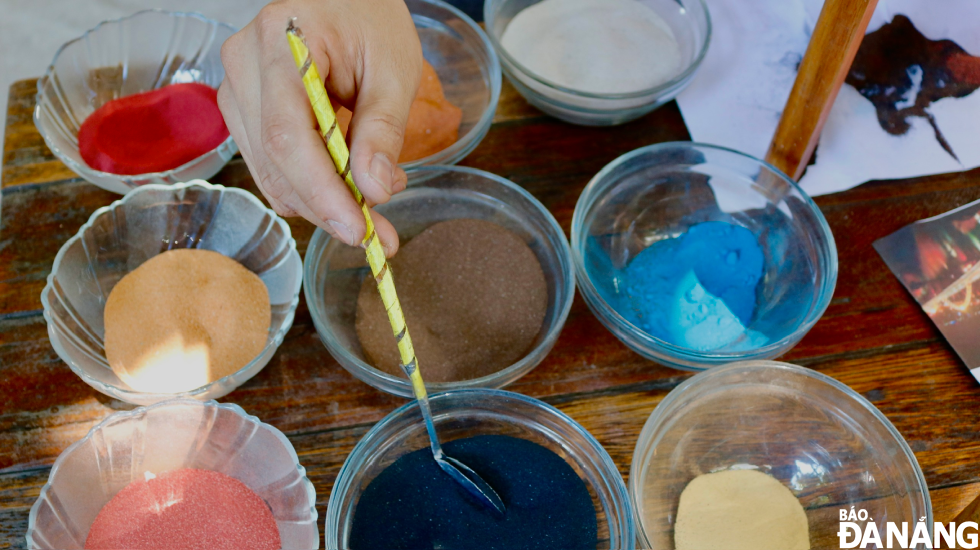 |
| The raw material for sand painting is natural sand sourced directly from Binh Thuan Province’s Phan Thiet City, Da Nang, Thua Thien Hue, etc. Natural sand has to be washed, dried and finally sifted two times in order to create the finished fine sand product. |
 |
| Dung's sand painting tools are homemade from stainless steel spoons and bamboo sticks, including a sand pouring tool and a sharpened bamboo stick called a drawing pen. |
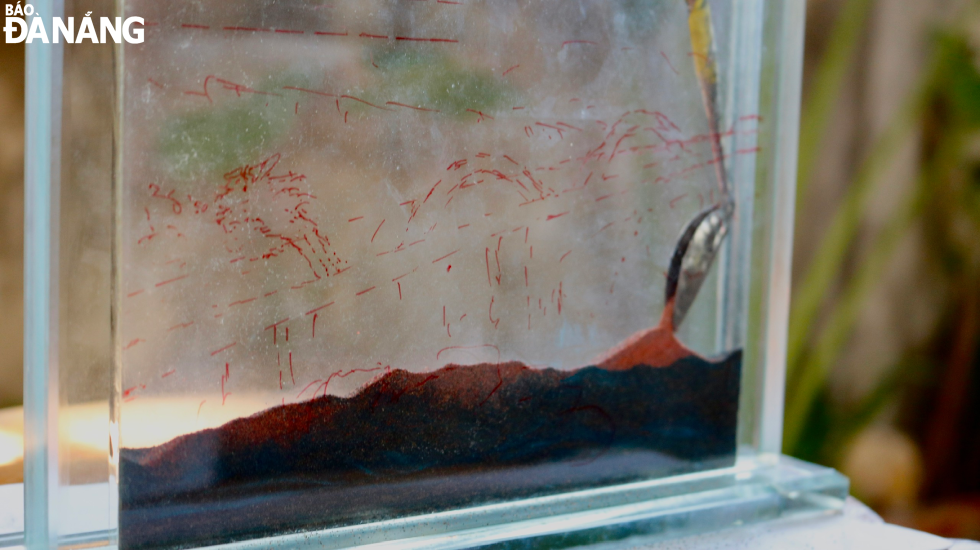 |
| To ensure accuracy, Dung will sketch the work on the glass surface first. Then, sand is poured from bottom to top. |
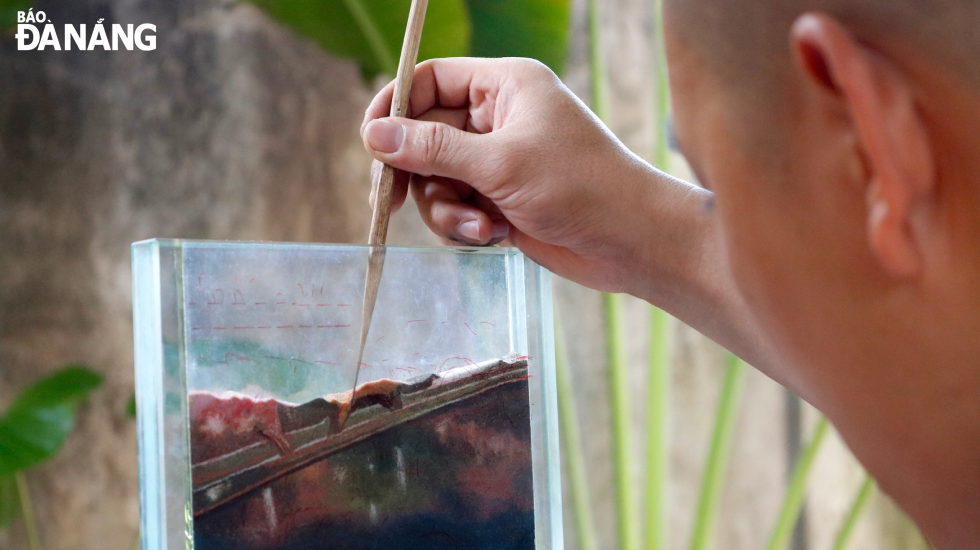 |
| The brush is used to create lines on the sand, and also to compact the sand so that it does not shift when moved. |
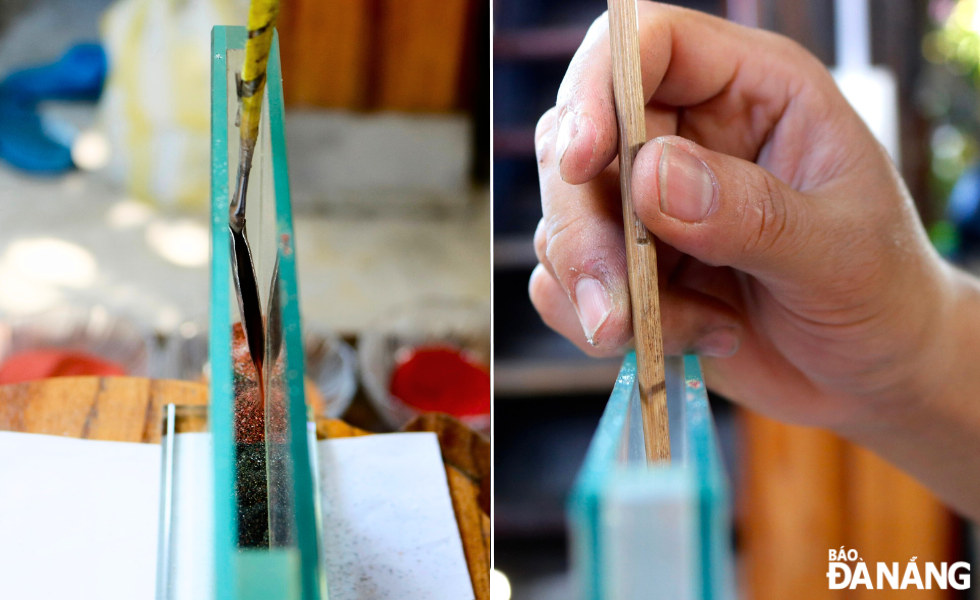 |
| Unlike other types of paintings that are drawn on a flat surface, the creative space of sand paintings is only about 1cm wide. The layers of sand are stacked on top of each other, without any adhesive, so the painter must concentrate on and pay attention to every detail. |
 |
| According to Mr. Dung, for the sand painting profession, the most important thing is patience and carefulness in each grain of sand to create vivid colour harmony and precision in each line. |
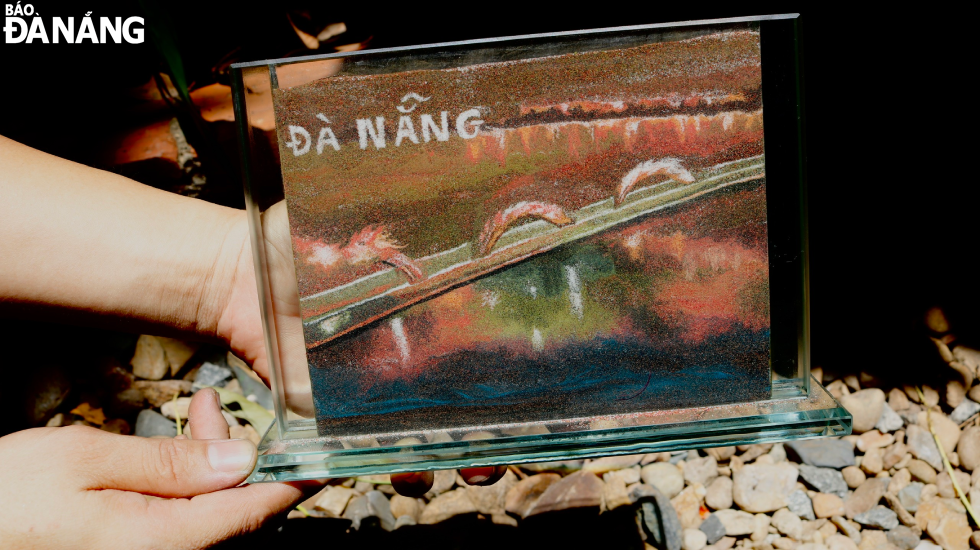 |
| The sand painting called "Dragon Bridge at Night" is created by Mr. Dung for nearly two hours. |
 |
| Dung's sand paintings cost from VND300,000 to tens of millions of VND, depending on the complexity and size of the artwork. |
 |
| Each sand artwork is meticulously and passionately completed by Mr. Dung. |
Reporting by THU DUYEN - Translating by M.DUNG
.












